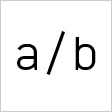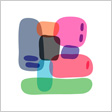We were commissioned by the Science Gallery in Dublin to curate an exhibition exploring interactions between design, science and futures.
For a while now, we’ve both been very interested in the space between reality and the impossible, a space of dreams, hopes, and fears. Usually this space is occupied by future forecasts (commercial world), design scenarios (corporate world) and utopias and dystopias (literary and cinematic worlds).
It’s an important space, a place where the future can be debated and discussed before it happens, so that, at least in theory, the most desirable futures can be aimed for and the least desirable avoided.
Usually when we discuss big issues we do so as citizens, yet it is as consumers that we help reality take shape. It is only when products are bought that they enter everyday life and have an effect. The act of buying determines the future. By presenting people with hypothetical products, services and systems from alternative futures people engage with them as citizen/consumers. As well as trying to reason and use our intellects we are seduced by desire and the irrational. This complex mix of contradictory emotions and responses is what it is all about.
There are no solutions here, or even answers, just lots of questions, thoughts, ideas and possibilities, all expressed through the language of design. They probe our beliefs and values, challenge our assumptions and encourage us to imagine how what we call ‘reality’ could be different. They help us see that the way things are now is just one possibility, and not necessarily the best one.
As the dreams that fed the 20th century imagination begin to fade, we need to learn how to dream new dreams.
The exhibition ran from 8 October - 13 December 2009.
Thanks to: Michael John Gorman and the Science Gallery team, and staff, students and graduates of the Design Interactions Department at the Royal College of Art.
Exhibition Design: Gerrard O' Carrol and Jake Moulson
Exhibition Graphics: Detail Design Studio
Catalogue: Detail Design Studio
Link to video.
Link to website.
Link to exhibits.
For a while now, we’ve both been very interested in the space between reality and the impossible, a space of dreams, hopes, and fears. Usually this space is occupied by future forecasts (commercial world), design scenarios (corporate world) and utopias and dystopias (literary and cinematic worlds).
It’s an important space, a place where the future can be debated and discussed before it happens, so that, at least in theory, the most desirable futures can be aimed for and the least desirable avoided.
Usually when we discuss big issues we do so as citizens, yet it is as consumers that we help reality take shape. It is only when products are bought that they enter everyday life and have an effect. The act of buying determines the future. By presenting people with hypothetical products, services and systems from alternative futures people engage with them as citizen/consumers. As well as trying to reason and use our intellects we are seduced by desire and the irrational. This complex mix of contradictory emotions and responses is what it is all about.
There are no solutions here, or even answers, just lots of questions, thoughts, ideas and possibilities, all expressed through the language of design. They probe our beliefs and values, challenge our assumptions and encourage us to imagine how what we call ‘reality’ could be different. They help us see that the way things are now is just one possibility, and not necessarily the best one.
As the dreams that fed the 20th century imagination begin to fade, we need to learn how to dream new dreams.
The exhibition ran from 8 October - 13 December 2009.
Thanks to: Michael John Gorman and the Science Gallery team, and staff, students and graduates of the Design Interactions Department at the Royal College of Art.
Exhibition Design: Gerrard O' Carrol and Jake Moulson
Exhibition Graphics: Detail Design Studio
Catalogue: Detail Design Studio
Link to video.
Link to website.
Link to exhibits.










































